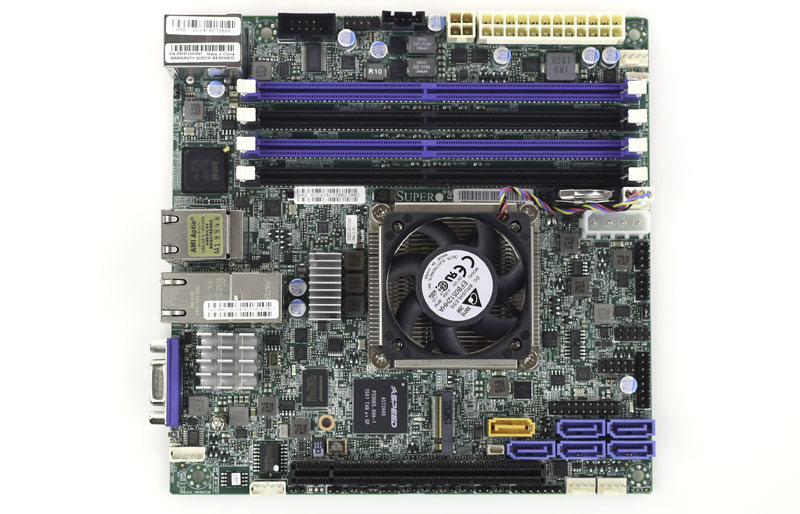The Supermicro X10SDV-6C+-TLN4F is a low power mITX platform and the first in our lab with the new Intel Xeon D-1528 SoC. The Intel Xeon D-1528 is a 6 core / 12 thread CPU that sports a 1.9GHz base and 2.5GHz turbo clock speed and a low 35w TDP. The Intel Xeon D-1528 was one of the Xeon D chips launched November 2015 and as a D-15×8 series part it is a networking SKU. We have reviewed the base X10SDV platform numerous times, most recently with the Supermicro X10SDV-4C-TLN4F review a few weeks ago. This new motherboard also has a lower TDP “wave 2” Xeon D with features like Intel DPDK support. Where it sets itself apart is that it offers 6 cores and 12 threads, in a very low 35w TDP. For perspective, as we saw in our Intel Xeon D-1528 benchmarks, this platform is faster than single Intel Xeon L5640 processors and has total system power consumption below that of just the CPU TDP for the Xeon L5640.
Test Configuration
We used a similar configuration as to the one we used on other X10SDV platforms we have reviewed.
- CPU: Intel Xeon D-1528 (embedded)
- Motherboard: Supermicro X10SDV-6C+-TLN4F
- Memory: 128GB – 4x Samsung 32GB DDR4 2133MHz ECC RDIMMs
- SSD: 6x Intel DC S3700 400GB, 1x Samsung XP941 512GB, 1x Intel DC P3600 400GB(add-in HHHL card)
- Operating Systems: Ubuntu 14.04 LTS, Windows Server 2012 R2, CentOS 7, OpenSUSE 13.2
We purposefully loaded up the system with SSDs just to ensure that all slots would operate if populated with storage. Production builds we are using in our datacenters typically have a SATA DOM, 4x 960GB SSDs and either 64 or 128GB of RAM. We did normalize the configuration removing all but one of the SSDs for power consumption testing so that those numbers can be compared with others on STH.
Supermicro X10SDV-6C+-TLN4F Overview
Following the familiar X10SDV layout, this motherboard comes in a compact mITX form factor. Primary features from the Xeon D SoC remain intact.
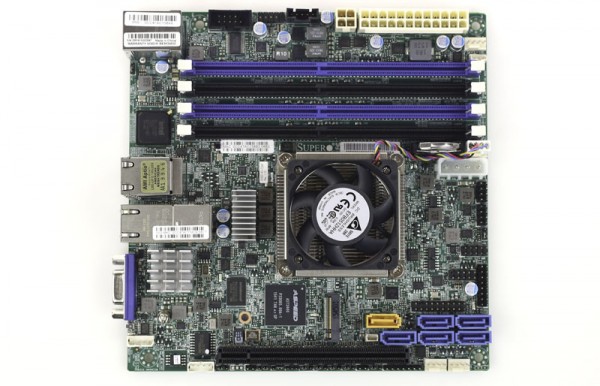
One will quickly notice that this motherboard is actively cooled. With the 35w TDP SoC onboard, the stock cooling solution works well. For those wondering, Supermicro adds the “+” in the model numbers of Xeon D motherboards to denote active cooling. The stock Delta cooler is a PWM 4-pin unit so the fan speed varies with workload and CPU temperature.

We have thermal imaging below which can show there are other hot spots on the motherboard. The components including RAM, power delivery heatsinks and the CPU heatsink are laid out with server oriented front to back airflow in mind.
You can see our Intel Xeon D-1528 Linux benchmark results for full performance figures but suffice to say, it performs nicely compared to other lower power platforms. In fact, there are a number of lower power dual Nehalem and low power single Westmere systems that can be replaced at a fraction of the power with the D-1528.
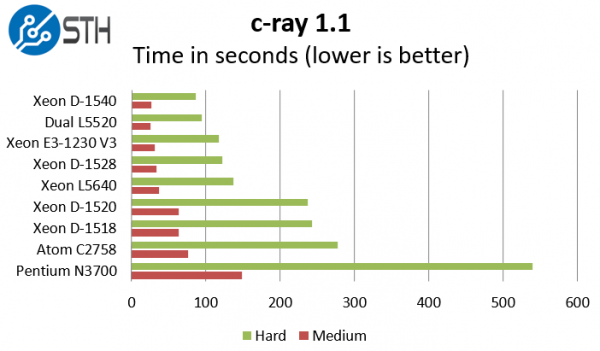
Looking to the top edge of the motherboard we see standard power connectors. We were able to power our test system using only the 24-pin ATX power connector unlike some competitive offerings. The ATX power connector, four DDR4 RDIMM slots, CPU heatsink, PCIe 3.0 x16 slot and event he SATA slots are laid out to support efficient server (front to back) airflow.
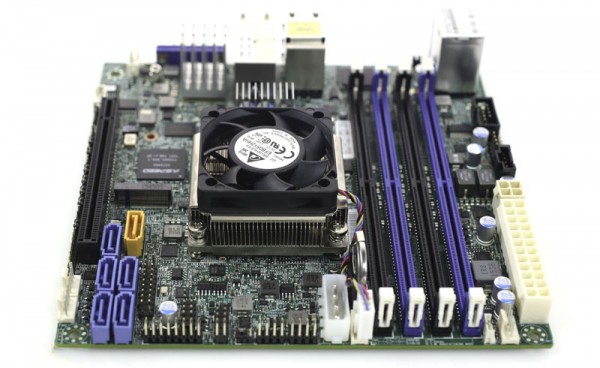
There are only four 4-pin PWM power connectors. Since the CPU cooler takes up one of the PWM headers, there are still three available for chassis fans.
One can see that the motherboard has a m.2 PCIe 3.0 x4 slot for SSDs. A m.2 SSD that is in this slot will sit just above the Aspeed AST2400 BMC chip which generates a fair amount of heat itself. That is a product of the PCB being so cramped with components. We would have liked to have seen a second m.2 slot for a RAID 1 SSD.
The Intel Xeon D platform has a set of PCIe 3.0 x16 lanes that is directed at the PCIe x16 slot onboard the X10SDV-4C-TLN4F. From our experience, one can actually get two NVMe SSDs to work in this slot using the Supermicro AOC-SLG3-2E4 card. Please note, you will need the Avago/ PLX chip version for this to work so the less expensive “R” version of the card will not work. See the linked thread for more information.
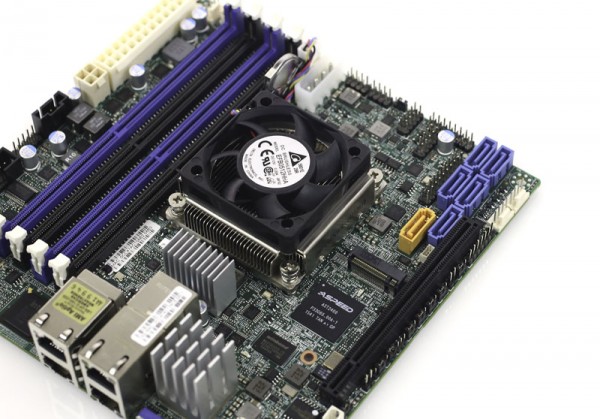
There are six onboard SATA III 6.0gbps ports. One of these ports (orange) is designed to take a SATA DOM. We use the 64GB SATA DOM quite extensively in our Xeon D 1U builds simply to save space. One can see our typical parts list here for the CSE-505-203B builds we use.
Omitted from the motherboard is a Type-A USB header. Then again, there is virtually no space for this on the PCB. This is a commonly used feature for embedded OSes such as those for storage appliances. One looking to install an embedded OS should look to the SATA DOM solution instead.
Moving to the rear of the unit one can see two USB 3.0 ports below the IPMI remote management Ethernet port.We see four RJ-45 ports which are the Xeon D’s two 10Gbase-T Ethernet ports and two 1GbE ports. The 10Gbase-T PHY for this is is under the large heatsink and in front of the VGA port.
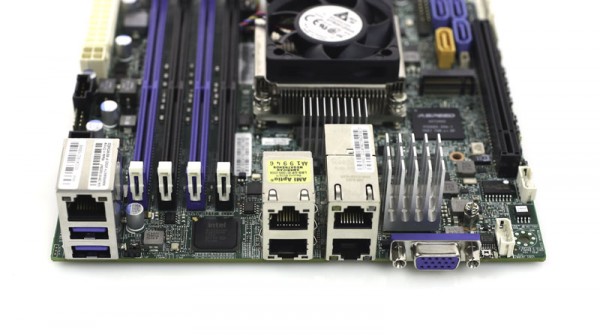
The Intel i350 controller for the dual 1GbE ports is a higher-end solution than dual i210-at controllers. The chip can be seen next to the DDR4 DIMM slots as well as the dual 1GbE RJ-45 ports.
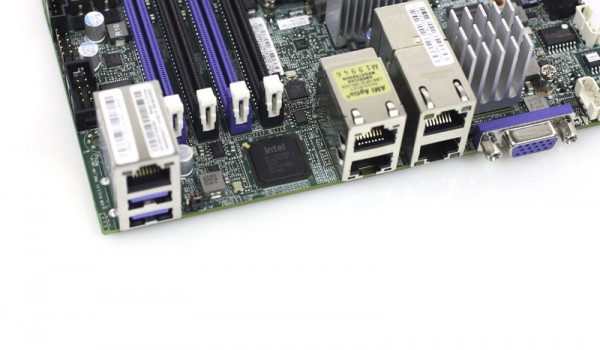
Overall the hardware packed on this small motherboard is impressive. One can build a very complete and expandable system in a short depth 1U chassis and fit the system into a very low power envelope. Since Intel prices the Xeon D-1528 much lower than the Xeon D-1541, this platform should be a few hundred dollars less at retail than the D-1541 systems with two more cores.
Supermicro X10SDV-4C-TLN4F Thermal Imaging and Power Consumption
To capture these images we utilize our FLIR Ex series professional thermal imaging camera and turned off FLIR’s MSX enhancements so we can see components outlined clearly. We put the system under 100% CPU load for a period of 24 hours to let “heat soak” set in prior to taking the images.
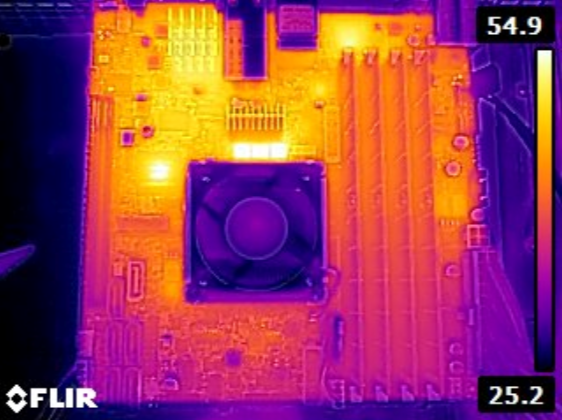
We can see the key hot spots being the AST2400 controller, the 10Gbase-T PHY and the power delivery components to the Xeon D-1528 SoC. We are using relatively low power cooling for this that is measuring around 24dba so one could certainly get cooler temps running higher speed fans.
We used our Extech TrueRMS Power Analyzer 380803 to take measurements at different points of the board’s use.
- BMC only power off – 4.8w
- Ubuntu 14.04 LTS installation screen – 22.7w
- UnixBench 5.1.3 single thread max – 33.9w
- Multi threaded max observed – 58.1w
These results are excellent with the new 35w TDP part showing great performance. If one is careful to select the right power and cooling, these platforms are just about able to fit two systems in a 1A @ 120V lower power density rack with two SSDs. This platform did consume more power than our previous D-1518 test bed.
Supermicro Management
Supermicro’s IPMI and KVM-over-IP as described a few times on this site, allows for a lot of deployment flexibility. Things such as fan speeds, chassis intrusion sensors, thermal sensors, and etc. can be monitored remotely. Alerts can be setup to notify the admins of issues. Beyond this, the functionality also allows for remote power control. One can do remote power up, power down, and reset of the server in the event that it becomes unresponsive.
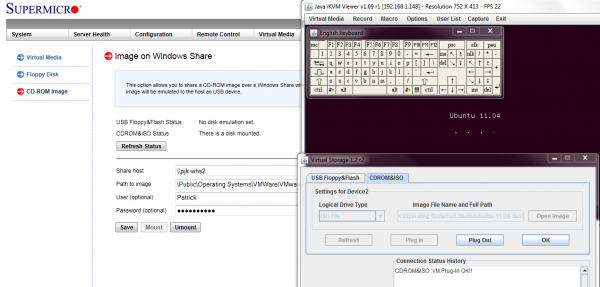
Another important feature is the ability to remotely mount CD images and floppy images to the machine over the dedicated management Ethernet controller. This keeps maintenance traffic off of the primary Intel NICs. At the same time it removes the need for an optical disk to be connected to the Supermicro motherboard.
The latest revision of Supermicro’s BIOS has a great feature: the BMC IP address shows up on the post screen! This is a super feature because if one has a KVM cart hooked up to the system, it gives an indicator of which machine one is connected to during post.

Supermicro does include KVM-over-IP functionality with the motherboard. We have been testing servers from HP, Dell, Lenovo and Intel that all required an additional add-in key to get this functionality. It is an absolute time and money saver in the datacenter and other vendors should follow Supermicro’s lead in this space.
Conclusion
With the Supermicro X10SDV-6C+-TLN4F we have a relatively high-performance 6 core/ 12 thread system in a package that uses less than 0.5A even with a SSD installed. One can read our Intel Xeon D-1500 v. Intel Xeon E3-1200 V5 decision guide. Comparing this to just the alternative for the onboard Intel X557 dual 10Gb controller, an Intel X540-t2 dual port 10Gbase-T adapter costs over $300 new. With a street price of around $650 and an onboard NIC valued at around $300 paying $350 for a 6 core/ 12 thread CPU plus motherboard and CPU cooler is one of the better values on the market right now. The Intel Xeon D-1528 has a recommended customer price of $389 alone from Intel.
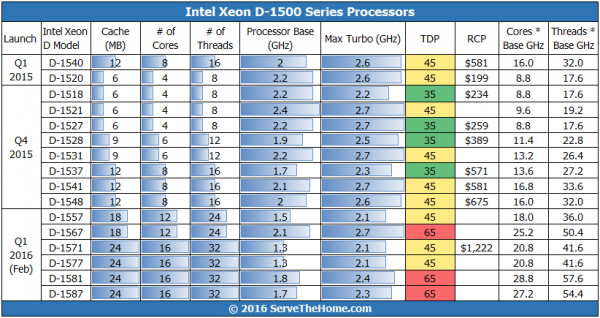
Overall the Supermicro X10SDV-6C+-TLN4F is a great value and is one of our favorite Xeon D platforms. If you are looking for a low power 10Gbase-T dedicated server platform as a hosting provider, a low power and quiet system for SOHO/ SMB/ network appliance use, the Supermicro X10SDV-6C+-TLN4F is a very compelling platform.

